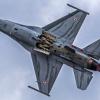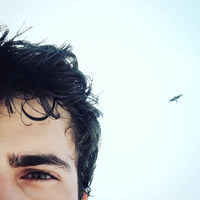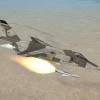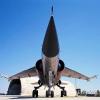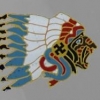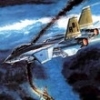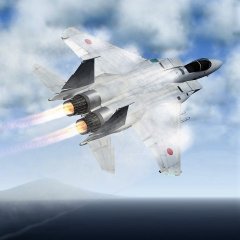Leaderboard
Popular Content
Showing most liked content on 05/14/2019 in Posts
-
6 points
-
5 points
-
5 pointsApparently it's Top Gun Day today. Compliments of the season to you all! http://www.topgunday.com/ 'Holy sh*t! It's Viper!'
-
4 points
-
3 pointsThis is the BTR-70 about 90% completed thanks to my children and what they got me for my birthday gift Substance Painter have been getting these nice skins this is a green skin with a mod and rust on it lol seen a lot of action. I still need to work the headlights
-
3 points
-
3 pointsHeinkel He-227 Sturmfalke, II/JG 7 Nowotny, 1945 Aircraft displays an experimental 3-color-splinter camo.
-
3 points
-
2 points
-
2 points
-
2 points
-
2 points
-
1 pointThe following story background is from DID's F-22 Total Air War game, dated 1998. The fictional skins are based on the F-22s appearing in DID's Total Air War scenarios. Skins and 3d model are still subject to updates. In the mid-1990s, most of the military might in the Red Sea region was found in only three countries; Yemen, Saudi Arabia and Egypt. All of the other nations, dealing with constant internal pressures and sporadic social unrest could ill afford any concentrated efforts at modern militarization. So the rest of the area’s nations would bide their time and wait for their opportunity to field a national army that could stand against the might of any one of the “big three.” Although there weren’t any formal declarations of war within the region, there were also no real alliances. Each nation was kept busy dealing with internal problems of various sorts, so much so that any external issues were usually left unresolved. Border disputes erupted from time to time and were usually settled as a result of some form of military stalemate with each side claiming to be the victor. An American F-22 wing forward deployed to Djibouti, still sporting the YF-22 paint scheme, 2007 Another factor within the region stemmed from the major cultural and religious differences between the peoples of the Red Sea area nations. The population in the southwestern part of the region was largely agrarian. Trading mostly foodstuffs and other essentials for survival, farming groups clustered into tribes and lay claim to several hundred acres of land. When arguments arose between neighboring tribes, the result was often bloodshed, as tribal land holdings sometimes crossed international borders. Cities and towns within the region were often defined by the religious beliefs of the residents. Rarely, were there populations of mixed beliefs. Only the largest trading and commerce centers could tolerate such religious diversity. Religious beliefs also played a major role in state and national rule, often affecting the decision making and negotiating thought processes of the country. American F-22s in their Pac West camouflage, executing an Air Interdiction mission over the Ethiopian highlands, 2018 With all of the diverse people and religious beliefs within the area, tension was an everyday side effect. Although no formal declarations of war had occured in the recent past, that did not mean that nations haven’t fostered ill will towards each other. Outright hostilities had not developed in the past because of the lack of either a credible military force or the capital required to support it. As a nation in the Red Sea area, you were either a “have” or a “have not” in the national forces department. But all of that was soon to change. New fortunes, created by the discovery of precious metals and oil reserves within the Red Sea operations area have lead to regional unrest. International power struggles for the control of these precious natural resources now bolster nationalism and strengthen each countries desire to fight. With the new regional income, formerly poor countries now can afford to train and equip national military forces. All armed forces within the region are ready and willing to test their newly purchased hardware. It is a very dangerous time. Saudi Arabia's F-22s, with their unusual Grey camouflage, crossing the "Empty Quarter" into Yemeni territory for a strike mission, 2022 While on an international antiquities excavation in southern Sudan, a professor and his archaeological team discovered unexpected oil reserves within that region. The oil deposits extended from within southern Sudan well into northern Ethiopia. Sudan and Ethiopia exploited the oil reserves and grew rich, becoming members of OPEC. The excitement over the discovery of new oil fields gave rise to new searches throughout the area for other oil reserves. Another series of large oil deposits were found in the coastal region of Eritrea, Djibouti and Somalia. Although not quite as expansive as the fields discovered in Sudan, it was sufficient to provide these three nations with a 11% control over the world’s petroleum market. As the oil reserves along the Somali coast were being mapped out, researchers stumbled upon new gold deposits. As the initial gold strikes were quickly exploited, more were found. There were some days when the coastal nations ceased to function because almost every citizen was out with a pickax and shovel, looking for their share of the fortune. The nations of Somalia, Djibouti and Eritrea became wealthy practically overnight. After much bargaining, Egypt acquired a few F-22s; here's one in its Woodland camouflage, conducting BARCAP over territorial waters in the Red Sea, 2015 To support the new military, the old infrastructure which had supported the former way of life had to be updated. Airfields had to be modernized to allow strategic and tactical aircraft operations. A large anti-aircraft network had to be established to provide warning and protection from invading hostile aircraft. National landmarks and governmental assets had to be protected from attack and reinforced to help repel any air strikes that might get through. Across all of the Red Sea theater area, nations prepared themselves for any outbreak of hostilities.
-
1 point
-
1 pointSo apparently its a Crud... new on on me, thought the "Crud" was referring to the crappy weather and the fact Mondays are just kinda crappy in genera One not so Cruddy Crud landing:
-
1 pointThe Fulcrum of Falkenberg Bad Moon Rising Gun Stalking Home is the Aviator Strizh
-
1 point
-
1 point
-
1 point
-
1 point
-
1 point
-
1 point
-
1 pointand mesh name for Pasko's Fishpot. "NoseCone" and works!!
-
1 point
-
1 pointIs the States, try to rotate the pic, search for a easily remarkable spot, in this case Cape Cod, and then everything fits.
-
1 point
-
1 point
-
1 point
-
1 pointAfter the release of the first CF-100 package, here is a glimpse of things to come for the Belgium Air Force (WIP)
-
1 pointFollowing the Second World War, RCAF aircraft returning from overseas and those that remained in Canada, maintained their RAF style markings until an indigenous system could be developed. Canada was the very first Commonwealth country to adopt its own unique national insignia in 1946. Between 1947 and unification in 1968, the RCAF transitioned through four distinct markings "eras". Source: Canadian Military Aircraft Markings 101 Required Screenie
-
1 point
-
-1 pointsAfter Phantom Phriday and Cruddy Monday and Sukhoi Sunday it had to come.... The Very Simple Rules: - You can post on Monday your local time zone only. - Your pics can feature any Mikoyan aircraft, in the care of any real world or fantasy nation or aggressor group or mercenary. - If other aircraft happen to be in the frame, that's fine. As long as the Mikoyan is the primary subject. - As many posts as you want each Monday, and you can have multiple pictures in each post 😁 With that, here's some MiG-31BM action... Yes, I found I had to move the decals.ini to Aircraft\MiG-31BM\Soviet1. Just part of the debugging process folks...
Important Information
By using this site, you agree to our Terms of Use, Privacy Policy, and We have placed cookies on your device to help make this website better. You can adjust your cookie settings, otherwise we'll assume you're okay to continue..


